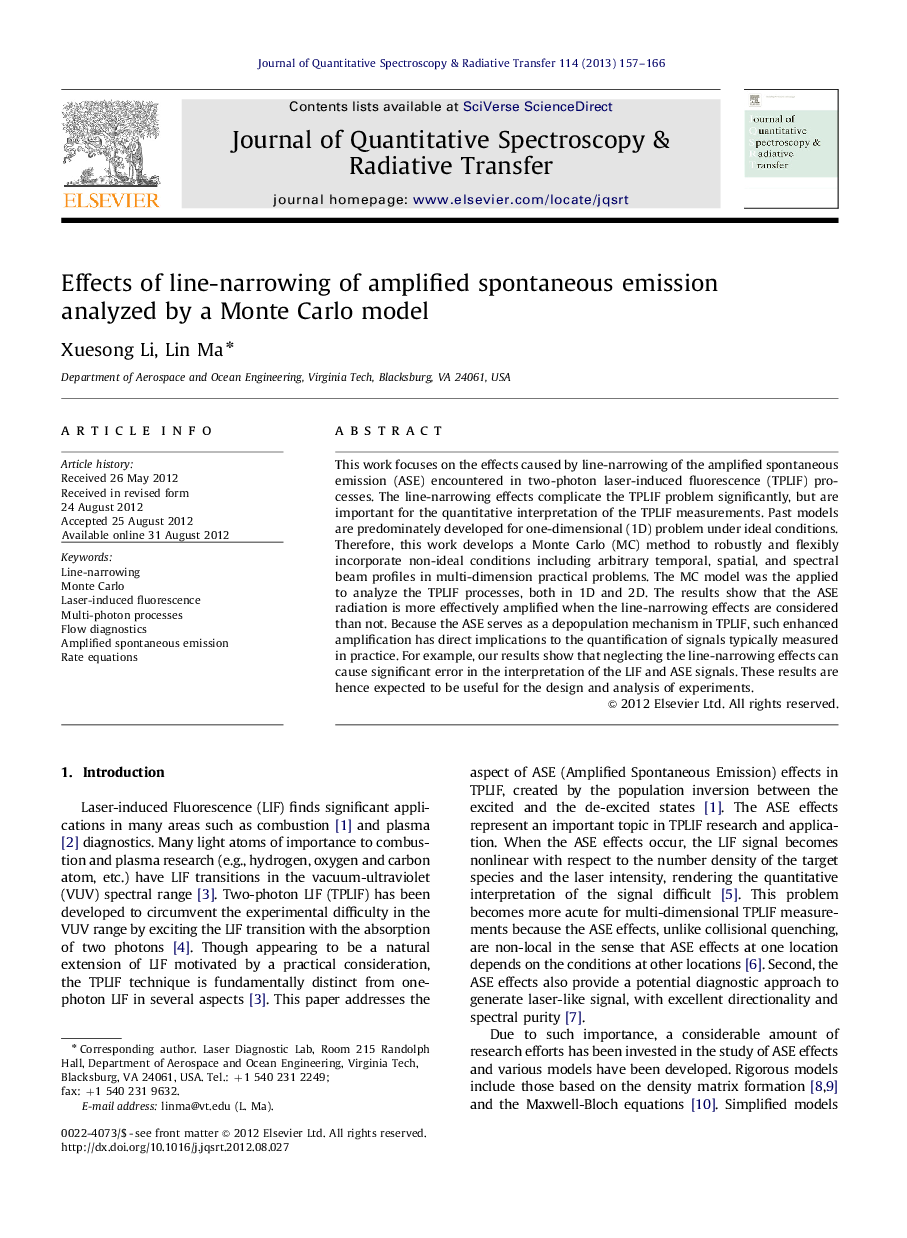| Article ID | Journal | Published Year | Pages | File Type |
|---|---|---|---|---|
| 5429210 | Journal of Quantitative Spectroscopy and Radiative Transfer | 2013 | 10 Pages |
This work focuses on the effects caused by line-narrowing of the amplified spontaneous emission (ASE) encountered in two-photon laser-induced fluorescence (TPLIF) processes. The line-narrowing effects complicate the TPLIF problem significantly, but are important for the quantitative interpretation of the TPLIF measurements. Past models are predominately developed for one-dimensional (1D) problem under ideal conditions. Therefore, this work develops a Monte Carlo (MC) method to robustly and flexibly incorporate non-ideal conditions including arbitrary temporal, spatial, and spectral beam profiles in multi-dimension practical problems. The MC model was the applied to analyze the TPLIF processes, both in 1D and 2D. The results show that the ASE radiation is more effectively amplified when the line-narrowing effects are considered than not. Because the ASE serves as a depopulation mechanism in TPLIF, such enhanced amplification has direct implications to the quantification of signals typically measured in practice. For example, our results show that neglecting the line-narrowing effects can cause significant error in the interpretation of the LIF and ASE signals. These results are hence expected to be useful for the design and analysis of experiments.
⺠A Monte Carlo method is developed to analyze two-photon laser-induced fluorescence. ⺠The method addresses line-narrowing (LN) of amplified spontaneous emission (ASE). ⺠Results show ASE is more effectively amplified when LN is considered. ⺠Results show LN plays significant role in interpreting LIF and ASE signals.
